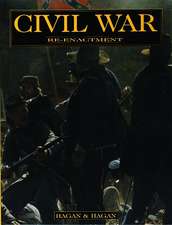Kahnawà:ke: Factionalism, Traditionalism, and Nationalism in a Mohawk Community: The Iroquoians and Their World
Autor Gerald F. Reiden Limba Engleză Paperback – 31 aug 2007
Today Kahnawà:ke (“at the rapids”) is a community of approximately seventy-two hundred Mohawks, located on the south shore of the Saint Lawrence River near Montreal. One of the largest Mohawk communities, it is known in the modern era for its activism—a traditionalist, energetic impulse with a long history. Kahnawà:ke examines the development of traditionalism and nationalism in this Kanien’keká:ka (Mohawk) community from 1870 to 1940.
The core of Kahnawà:ke’s cultural and political revitalization involved efforts to revive and refashion the community’s traditional political institutions, reforge ties to and identification with the Iroquois Confederacy, and reestablish the traditional longhouse within the community. Gerald F. Reid interprets these developments as the result of the community’s efforts to deal with internal ecological, economic, and political pressures and the external pressures for assimilation, particularly as they stemmed from Canadian Indian policy. Factionalism was a consequence of these pressures and an important ingredient in the development of traditionalist and nationalist responses within the community. These responses within Kahnawà:ke also contributed to and were supported by similar processes of revitalization in other Iroquois communities.
Drawing on primary documents and numerous oral histories, Kahnawà:ke provides a detailed ethnohistory of a major Kanien’keká:ka community at a turbulent and transformative time in its history and the history of the Iroquois Confederacy. It not only makes an important contribution to the understanding of this vital but little studied community but also sheds new light on recent Iroquois history and Native political and cultural revitalization.
Drawing on primary documents and numerous oral histories, Kahnawà:ke provides a detailed ethnohistory of a major Kanien’keká:ka community at a turbulent and transformative time in its history and the history of the Iroquois Confederacy. It not only makes an important contribution to the understanding of this vital but little studied community but also sheds new light on recent Iroquois history and Native political and cultural revitalization.
Din seria The Iroquoians and Their World
-
 Preț: 192.66 lei
Preț: 192.66 lei - 18%
 Preț: 970.29 lei
Preț: 970.29 lei -
 Preț: 172.48 lei
Preț: 172.48 lei -
 Preț: 224.43 lei
Preț: 224.43 lei -
 Preț: 248.10 lei
Preț: 248.10 lei -
 Preț: 429.67 lei
Preț: 429.67 lei -
 Preț: 323.53 lei
Preț: 323.53 lei -
 Preț: 178.00 lei
Preț: 178.00 lei -
 Preț: 133.00 lei
Preț: 133.00 lei
Preț: 134.86 lei
Nou
Puncte Express: 202
Preț estimativ în valută:
25.81€ • 28.05$ • 21.70£
25.81€ • 28.05$ • 21.70£
Carte disponibilă
Livrare economică 31 martie-14 aprilie
Preluare comenzi: 021 569.72.76
Specificații
ISBN-13: 9780803222557
ISBN-10: 0803222556
Pagini: 235
Ilustrații: 6 photographs, 2 maps
Dimensiuni: 152 x 229 x 15 mm
Greutate: 0.36 kg
Ediția:New.
Editura: Nebraska Paperback
Colecția University of Nebraska Press
Seria The Iroquoians and Their World
Locul publicării:United States
ISBN-10: 0803222556
Pagini: 235
Ilustrații: 6 photographs, 2 maps
Dimensiuni: 152 x 229 x 15 mm
Greutate: 0.36 kg
Ediția:New.
Editura: Nebraska Paperback
Colecția University of Nebraska Press
Seria The Iroquoians and Their World
Locul publicării:United States
Notă biografică
Gerald F. Reid is an associate professor of anthropology and sociology at Sacred Heart University in Fairfield, Connecticut.
Recenzii
"Contributes substantially to our understanding of this complex society."—J. R. Miller, American Historical Review
“[Reid’s] most significant contribution is outlining how the Kahnawake preserved their traditional values by protesting intrusive federal policies and joining voices with similarly disenchanted groups. For this reason, students of nineteenth- and twentieth-century Native American should read his book.”—Ethnohistory
“Reid has produced a meticulous political and institutional history of governance in Kahnawà:ke, a Mohawk community south of Montreal. . . . The book represents an impressively thorough example of archives-based historical research.”—M. Harkin, Choice









